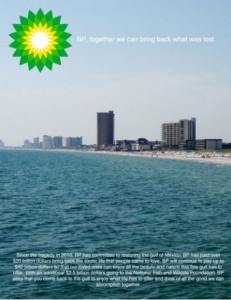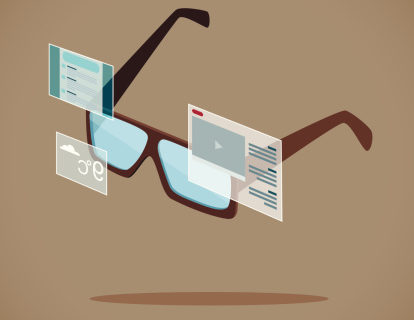Marian St. Laurent
Business models are shifting faster than we’re able to define them. It’s no surprise then that the various institutions of persuasion (ie. advertising firms, market research firms, brand consultancies, design firms, media and PR companies) are not only struggling to stay relevant in the midst of unprecedented technological and economic upheaval, but have begun to melt into one another in how they describe what their functions exactly are.
The difference between image-wrangling companies today can be summed up as an index of specialist terms- all of which a practitioner engaged with the foundations of communications eventually becomes familiar enough with to work across a range of sectors and brand challenges. Because of its concern with the building blocks of meaning – (ie. the foundation upon which brand identities and public perception are formed) – “commercial semiotics” can be described as both everything and nothing, the alpha and the omega of branding. And that is one reason why in the US, a market focused on results above all, it has been the exotic bird of brand consultancy until now. Pulling the lens back for a moment, advertising and marketing were not viewed as a legitimate profession in America until sometime in the 1950’s when the commercial possibilities of television broadcast flourished. On-air television advertising and print ads in lifestyle magazines – the predominant persuasion models of the earlier half of the 20th century- have matured into what is now an advanced and converged highbrow popular culture. It was only after the 1990’s and early 2000’s that advertising in America got a little deeper with the integration of British-based strategic planning tactics, in spite of the fetishisation of consumer psychology and focus groups that came with that approach.
Although ad agencies and brand consultancies previously existed in separate silos as recently as the mid aughts, advertising mavericks began to co-opt brandspeak to distinguish themselves with a rhetoric of brand “touchpoints”, “Disruption” and “Lovemarks” in response to the shift from print and broadcast campaign-based models to the rise of branding as the millennium turned.
In the earliest phases of digital convergence in the couple of years before the market collapse of ’08, when a given brand strategy shifted paradigms or made shareholders big profits, brand consultancies and ad agencies would try to extract and replicate the strategic DNA of best practice brands. In the most famous example, Apple in the mid aughts became a meme clients referenced tirelessly when they talked about wanting to become “Iconic” for a few years. Agencies didn’t call the methodology behind this meme-jacking “semiotics”, but that’s what it ultimately was as a strategic approach based on examining the structure of one persuasion strategy and grafting it on to another brand objective.
Then and finally- came cultural insights and so-called cultural brand strategy in the US market with some early guerrilla marketing tactics and risk-takers like Crispin Porter or W&K which brought “Culture” out of the strategic planning closet, albeit what amounts to a teenage boy version of it. While in-house cultural anthropologists existed few and far between in a couple of big ad and brand agencies, this dumbed-down, manboy vision of culture (which continues to dominate the FMCG sphere and is most recently incarnated in W&K’s grotesquely misogynist but nonetheless applauded Momsong campaign) brought us the guilty pleasures of Subservient Chicken, “The King” campaigns, Gatorade’s abbreviation into just “G” or the lightning bolt trademark, and so on until today’s more layered, cognitively dissonant millennial-bait.
Even though American corporations have been the engine of globalism that has necessitated more “cultural” approaches to global mega-branding in order to contextualise American multinational brands in new regions, numbers-first thinking and geographic isolation made most American clients slow to comprehend the power and importance of cultural literacy for brands.
 Recent conversations in branding have become more conceptual to keep up with an economy that is quickly shifting out of 19th and 20th century product paradigms into something more ephemeral and complicated. As definitions and institutions in place for centuries transform before our eyes, strategists have to return to age-old basics of persuasion as its forms shift and multiply across new technologies and formats.
Recent conversations in branding have become more conceptual to keep up with an economy that is quickly shifting out of 19th and 20th century product paradigms into something more ephemeral and complicated. As definitions and institutions in place for centuries transform before our eyes, strategists have to return to age-old basics of persuasion as its forms shift and multiply across new technologies and formats.
The ubiquitous use of terminology like “story-telling” over the past couple of years comes close to a mainstream admission that 1) we’ve reached a point where past definitions and professional titles within the industry are barely applicable to post-convergence, post-collapse business models and 2) semiotics is a necessary tool of any strategist needing to sell anything anywhere now.
In other words, the more inherited definitions and institutions transform into post convergence chaos- and the more indistinguishable products become from one another in a saturated marketplace, the more difficult it is to get anyone to care about or actually purchase what it is you’re selling. Symbols, sensorial cues and narrative structures work harder and more strategically across the mediums at hand because increasingly, they are all we have in an economy shifting out of a product paradigm into an engagement & information economy.
It’s hard to tell what methodologies or which kinds of companies will emerge intact out of so much rapid change and institutional chaos. I have been excited by the more efficient, flexible way American consultancies (including my own) are moving beyond European and British approaches to semiotic thinking. We don’t need fetishizing specialist terminology in such interesting times. In a highly technological economy, brands are increasingly understood as part of a symbolic, “semio-economy” where powerful storytelling and sophisticated images are surpassing brands as a new currency with real world, and at times even, life and death impact.
Key Takeaways for the Road
In just under fifteen years of specialising as a cultural critic, media consultant and decoder, brand anthropologist, cultural analyst and innovation specialist here are a couple of takeaways for reading the signs in our brave new world:
1) Call It What You Like, But It’s Everywhere and Here to Stay. There is no way for business or brand strategists to make sense of current techno-cultural developments without applying some kind of cultural modelling. As audiences become more sophisticated in decoding culture & content themselves in an economy based on apps and platforms (vs. detergents and deodorants), engagement strategy requires deeper structural understanding of the paradigm shifts impacting consumer perception to help clients leverage change before everyone finds out about it.
If brands are framed as storytelling because we’re at a loss for how to describe what it is that we’re tasked with in a post convergence economy, it should be comforting to anyone doubting the relevance of a semiotic approach to business strategy to consider that “stories” are based on syntax, symbols, metaphor, canons, genres, archetypes and cultural context etc. – the nuts and bolts of this practice.
 2) Strategic Thinking = Critical Thinking.
It is no longer radical to admit that brands and media create reality. In the words of Ben & Jerry’s CEO Jostein Solheim, “You can’t not take a stand.” Critical thinking is an important part of looking at culture strategically. Why should a client commission cultural consultancy if the cultural role (including the social and environmental impact) of a brand or product aren’t addressed or critiqued? Cool hunters and trends experts without critical thinking skills to identify where these paradigm shifts are coming from and where they are going are not equipped to help clients compete in our feral times.
Taking world events and upcoming policy change into consideration – especially if they aren’t sexy – is important. Reality can’t be ignored forever and it has become almost impossible to avoid ideology as the stakes are raised across every sector. While no one can argue with the escapist pleasures of a great advertising campaign, the application of semiotics primarily to “emotioneer” perception away from reality for large multinational brands that are losing popularity globally is an ethically questionable approach that is not up to speed with how sophisticated audiences are evolving or how high the stakes have become. There’s too much transparency, competition, economic and environmental fallout for 1990’s era hubris. A case in point is a list of rebrands from the early aughts that have aged poorly or failed completely because they were found out for not living up to their brand “promise”- and much worse.
2) Strategic Thinking = Critical Thinking.
It is no longer radical to admit that brands and media create reality. In the words of Ben & Jerry’s CEO Jostein Solheim, “You can’t not take a stand.” Critical thinking is an important part of looking at culture strategically. Why should a client commission cultural consultancy if the cultural role (including the social and environmental impact) of a brand or product aren’t addressed or critiqued? Cool hunters and trends experts without critical thinking skills to identify where these paradigm shifts are coming from and where they are going are not equipped to help clients compete in our feral times.
Taking world events and upcoming policy change into consideration – especially if they aren’t sexy – is important. Reality can’t be ignored forever and it has become almost impossible to avoid ideology as the stakes are raised across every sector. While no one can argue with the escapist pleasures of a great advertising campaign, the application of semiotics primarily to “emotioneer” perception away from reality for large multinational brands that are losing popularity globally is an ethically questionable approach that is not up to speed with how sophisticated audiences are evolving or how high the stakes have become. There’s too much transparency, competition, economic and environmental fallout for 1990’s era hubris. A case in point is a list of rebrands from the early aughts that have aged poorly or failed completely because they were found out for not living up to their brand “promise”- and much worse.
3) Forget the Word, Deliver the Magic. The good news is we’re in business for a while. The Internet is still text-based and algorithms cannot analyse images or content deeply or efficiently enough for strategic insight without trained, human expertise to make sense of the data. Artificial Intelligence is not up to speed with metaphor identification as of yet, and the amount of server power needed even for the most rudimentary semantic and semiotic analysis of text-based stimulus is still prohibitively expensive.
The bad news is: it’s still laborious and takes real training to track culture in a way that is usable for business leaders. Although semiotics-based approaches are an indispensable, transformative and efficient way of tracking and mapping the data and media glut upon us, in the US market commercial “semiotics” has a persistent brand problem that starts with whether or not to use the “s” word to convey the approach with clients.
In an advancing 21st century, the power of story and culture are ubiquitously understood as essential to marketing communications and branding. Our challenge is to deliver the power of the approach in its ability to reveal, with refreshing clarity, the underlying mechanics of perception drivers shaping our world and the audiences we need to resonate with. When we demonstrate the sophistication of the methodology by making evident highly complex cultural developments in simple, everyday language, clients can read the signs for themselves and can’t help but be converted into believers.
Marian St. Laurent is Founder of Heavy Symbols based in New York and Milan. She can be reached on Twitter @HeavySymbols


